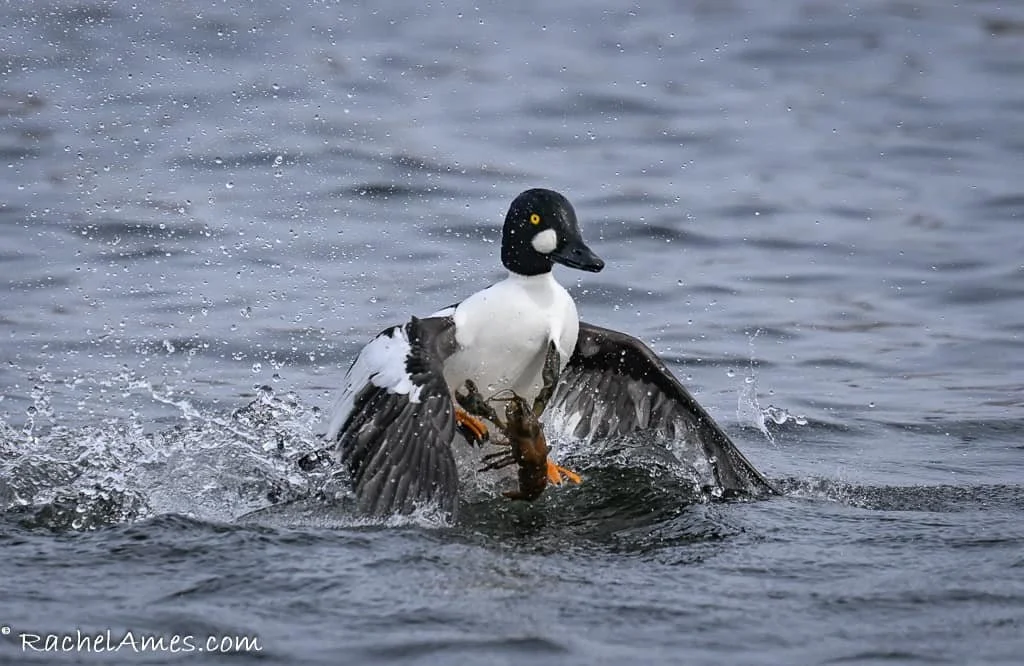Wildlife Wednesday - The Common Goldeneye
by Andy Ames
Wildlife Wednesday.
While most waterbodies of the Estes Valley are frozen, Lake Estes can still be counted on for wildlife entertainment. Canada geese are plentiful and others such as Mallards, Mergansers, Ring-necked ducks, and Common Goldeneyes can be seen as well. Canada geese and Mallards are dabblers, feeding on what they can reach from the surface. The others are divers, swimming below the surface in search of food. Crayfish are a Goldeneye favorite and they have a special technique for swallowing these large crustaceans. See photos below to learn how this all goes down.
To learn more about the Common Goldeneye here is an excerpt from a February 4, 2022 Feathered Friday post.
Feathered Friday
By Rachel Ames, EVWC board member
While the Trumpeter Swans at Lake Estes have garnered a lot of attention lately, there’s a smaller diving duck that is pretty remarkable in its own right. The Common Goldeneye breeds throughout the boreal forests of North American and Eurasia. North American Common Goldeneyes usually winter along the Pacific and Atlantic coasts, but we are lucky to have quite a few wintering at Lake Estes. As strong swimmers, they are well suited to foraging in lakes kept ice-free by dams and power plants. They eat all sorts of insects, crustaceans, mollusks, fish eggs and occasionally small fish and aquatic vegetation. While they can dive to 20 feet, they prefer to forage at depths less than 12 feet. They will often stir up rocks, and while they usually eat their prey underwater, they can loosen up vegetation so other ducks and geese can often be seen shadowing them in search of food. Common Goldeneyes are tree nesting ducks and make their nests in cavities made by other birds or squirrels. There is quite a bit of “nest mixing” or nest parasitism by other tree nesting ducks such as Hooded Mergansers, Barrow's Goldeneye, Common Merganser, Bufflehead and Wood Ducks. Once the ducklings hatch, they may join another brood. This brood amalgamation (also called creching or brood-mixing) is when multiple broods join up with one or more females. While we aren’t in the breeding range of these interesting ducks, we can enjoy them as they search for a mate and wait out the winter season before heading north again.
A male Common Goldeneye thrashes its prey. This serves a number of purposes. It can stun the crayfish to make it easier to handle. Often the thrashing will cause a claw or leg to break off eliminating some of the crayfish’s defenses. Most importantly, it allows the Goldeneye to maneuver the crayfish to be swallowed tail first.
Claws gone, the crayfish slides right down.
Crayfish can be swallowed claws and all.
Sometimes the crayfish wins. This one successfully fought back and survived for another day.




